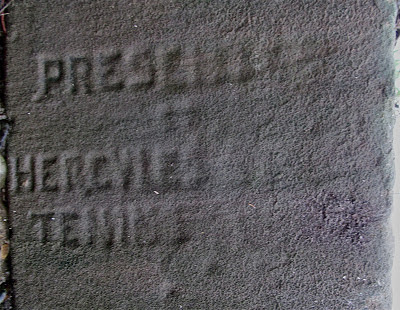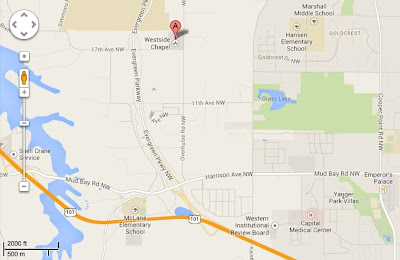One more post about artifacts, and I'll be one of those writers who misses the forest for the trees. So here's one about dirt. Or sediment, if you insist.
So this post looks at the strata of the beach at Mission Creek. Before or after the restoration, one of the finest beaches of Olympia, shell and gravel laid out in crescents by tidal ebb and flow, the waves, and sometimes the wake of a boatload of fracking proppants coming in or of logs heading out. If you could zone out the occasional chunk of sidewalk from before or the artificial apron of cobbles flanking the stream outlet after, the beach looks natural.
But dip below the surface, as I did with hand auger and shovel when looking for archaeology a few months back, and you get a different picture. For starters, a 4-inch bucket auger cannot get much more than a foot deep into the beach because you run into a layer of brick. Nor can a shovel get very far without expanding the hole and breaking your back hacking the bricks loose. Once through, what had been yellow clay gets very bluish-grey very quickly, the long-saturated gleyed layer that would make perfect sense back inland in the estuary, but which is a bit more baffling here. After a foot or so of that, you hit shell-gravel beach again.
Rip into it with heavy machinery, as happened when Mission Creek was restored this Fall, and the stratigraphy makes the depositional history that much clearer. The modern beach has been accumulating atop the slumping clay fill of the road that dammed the creek a couple or three generations ago. The yellow clay beneath the asphalt calved off and melted away over the years after the road was built, spreading itself thinner down the beach, taken by the very tides and waves that bring the gift of gravel, sand, and shell from the north (including quit a few Olympia Oyster shells, which probably died decades ago in polluted Budd Inlet).
During the same time, someone used the road to dump bricks onto the beach. Lots of them lack any mortar, and quite a few are half-fired, mis-shapen, and brick-bat rejects, so I suspect that this may have been where some of the discards from a brick-yard up the hill came to rest. Some bricks also occur at the top of the yellow clay fill, just below the asphalt surface, so brick disposal in the area was not something that began years after the road was abandoned.
Lest you judge Olympians of yore, deploring their shore-dumping ways, allow that maybe they were just trying to cover the stinking grey mud that shows up right below. This clay is a little puzzling, since it is pretty pure and widespread both inland and seaward of the sand spit, but not beneath it. It could have been brought up from deeper when people dug out a path for the culvert that became the mouth of Mission Creek, but there does not seem to be enough mixing and disturbance. It looks like a natural estuarine deposit, but it's seaward of the spit, and post-dates the 1850s, perhaps by a lot. Maybe some smarter reader will explain this.
In any case, the grey clay is there, and just beneath it is the original beach. Which looks a hell of a lot like the modern beach, except there are even more oysters, and a greater shellfish diversity over all. This is where the mid-19th Century artifacts begin showing up.
And keep showing up, until you reach another, deeper, layer of gleyed cley. At which point, the channel excavation was deep enough for the project and excavation stopped; the hole was completely inundated anyway, so there was nothing more to see. Just before that point, though, the sand spit had a thin layer of red atop blacker, muckier beach; this looks like the oxidized surface (red) of a saturated, anaerobic (black) realm of the sand spit. Kept wet by fresh water seeping through from upstream and it's low elevation (higher than the lowest tide, but deep enough that evaporation's not a factor, and drainage of the matrix cannot beat the next tide flowing back in), this deposit contains bark, wood, and leather. Some of Olympia's earliest axe-cut wood-chips are here, as well as what may be the first generation of shoes lost (or tossed?) in the mud by children intent on being barefoot. Interestingly, this depth seems to lack any of the glass and ceramic that dominate the cultural component of the beach higher up; maybe folks just hadn't had time to break many bottles or dishes at that early date.
Whatever else the shoes and other artifacts may show, the stratigraphic history of Mission Creek tells a story. "Civilization," with its residue of shoe soles and broken glass, flowed onto the shores of Priest Point, and then ebbed. The Mission came and went, and while tribally produced stone tools and cooking rocks seem to have been part of this cultural deposit until occupation of this piece of earth ended. A road into the park covered the spit, people dumped bricks there, and other (or maybe the same) people stacked concrete rubble to keep the road from eroding away completely. Eventually, nobody cared about the road anymore, and it would collapse a bit now and then, while the currents and tides, waves and wakes, pushed new shell and gravel on top.
The "natural" beach of today is drifting in from the shoreline north of Mission Creek. Hidden beneath it is the flow and ebb of Western Civilization in the Pacific Northwest. Even with the road breached and the stream channel restored, it is unlikely that all the bricks will wash away, or all the clays and fills and alterations of modern humans will disappear entirely. Some day, geologists will come and see these Anthropocene deposits. Across the globe, wherever other (but innately similar) humans have altered waterways and dumped things, similar stories will enter the sedimentary record. Long after we are extinct, the stratigraphic sciences will find the evidence we left behind.















